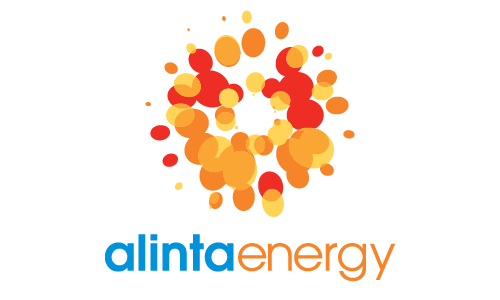If you have solar panels on your home, they don’t just help power your household – they can also earn you credits for any excess energy you send back to the grid. While most electricity plans have some allowance for solar, many providers offer specific plans with higher rates to reward the solar energy you export.
Picking the right plan means you can maximise what your solar system earns and potentially reduce your energy bills.
What is a solar electricity plan?
Solar electricity plans are electricity plans that also credit you for the excess solar energy your home sends back to the grid. They’re not standalone solar-only products and work like any other electricity plan, with daily supply charges and usage rates for the electricity you use from the grid. The key difference is the feed-in tariff (FiT) – the payment you receive for the solar energy you export.
Many electricity plans will include a basic FiT, but some retailers also offer solar-focused plans with higher FiTs that can reward your exported solar more generously. However, it’s important to keep in mind that the electricity you buy from the grid may cost more on these plans, so the value depends on how much excess energy your system produces.
Types of energy plans
How do solar feed-in tariffs work?
When you export solar energy to the grid, you get paid based on how much electricity you send. The payment you receive is in cents per kilowatt-hour (c/kWh), which means you get a certain number of cents for every unit of electricity you export.
The rate you get could be:
- Fixed: you are paid a consistent rate for all exported electricity, regardless of when it’s sent to the grid.
- Variable: you receive different rates depending on the time of day. Typically, higher rates apply during peak demand periods, such as evenings, and lower rates during the daytime.
Many plans include export caps, which limit the amount of electricity you can earn the highest feed-in tariff on each day. For example, you might get 10c/kWh for the first 8 kWh exported daily, then a lower rate (like 4c/kWh) for any additional export.
Some plans also set a maximum solar system size, often limiting inverter size to around 10 kW. If your system exceeds this, the provider may cancel your plan.
Who sets feed-in tariffs?
In most parts of Australia, energy retailers set their own FiT rates and structures, which is why the rate you receive can vary so much between plans and providers.
There are a few exceptions:
- WA: FiTs are set by the state government under the Distributed Energy Buyback Scheme (DEBS), which pays different rates depending on the time of day you export.
- Regional QLD: the Queensland Competition Authority (QCA) sets the mandatory FiT for customers in regional areas of the state.
- NT: government pricing reforms in 2025 introduced time-of-export rates, with the maximum now 8.66c/kWh for energy exported between 3pm and 9pm.
Why are feed-in tariffs falling?
Feed-in tariffs have dropped significantly over the past ten to 15 years. State governments originally offered generous incentives, known as premium feed-in tariffs, to encourage solar adoption, with rates up to 60c/kWh available in some areas.
Since then, installations have soared – today, more than 4 million solar systems are installed across Australia, with one in three homes having solar panels.
As more households generate their own solar power, there’s often more electricity available than people need. Because of this extra supply, the value of excess electricity exported to the grid has decreased, resulting in lower feed-in tariffs.
Even with falling tariffs, the electricity your solar panels generate and use in your home is effectively free. This means households can still save money by reducing the amount of electricity they need to buy from the grid, leading to lower energy bills overall.
What is the ‘sun tax’?
In July 2025, energy distributors in NSW and SA introduced a two-way solar tariff – also called an export tariff – that charges retailers when households export electricity during peak solar periods.
Retailers may pass these costs on to customers, but you can reduce or avoid charges by storing excess solar energy in a home battery and exporting it at a later time.
The tariff is not planned for rollout in other states yet.
Best feed-in tariffs in your state
The maximum FiT you can get depends on your plan and location. Below are the energy providers offering the most generous FiTs in each state or territory as of December 2025:
| State/territory | FiT up to |
|---|---|
| ACT | 10c/kWh |
| NSW | 10c/kWh |
| NT | 18.66c/kWh |
| QLD – SE | 10c/kWh |
| QLD – regional | 8.66c/kWh |
| SA | 10c/kWh |
| TAS | 10c/kWh |
| VIC | 11c/kWh |
| WA | 10c/kWh |
How much do solar electricity plans cost?
Solar plans vary in cost depending on your usage rates, supply charges and the FiT you receive. While a higher FiT can boost the value of the solar you export, the cheapest plan overall isn’t necessarily the one with the highest FiT.
It depends on how much power you export versus how much you still use from the grid – so it’s important to think about how you use electricity when picking a plan.
The table below shows the highest FiT plan and the lowest cost plan available through Savvy in the state capitals in each region we compare.
| State/territory | Highest FiT plan | Maximum FiT | Cheapest overall electricity plan | Maximum FiT |
|---|---|---|---|---|
| ACT | ActewACL, Energy Rewards 25%, $2,006/year | 6c/kWh | Red Energy, Red Living Energy Saver, $1,992/year | 4c/kWh |
| NSW | Alinta Energy, SolarBalance On, $1,925/year | 10c/kWh | 1st Energy, 1st Saver 22, $1,521/year | 1c/kWh |
| QLD | Alinta Energy, SolarBalance Max, $2,057/year | 10c/kWh | Alinta Energy, HomeDeal Select, $1,778/year | 4c/kWh |
| SA | ENGIE, ENGIE Solar, $2,300/year | 10c/kWh | ENGIE, ENGIE Perks, $1,909/year | 4c/kWh |
| VIC | ENGIE, ENGIE Solar, $1,421/year | 11c/kWh | OVO Energy, The Free 3 Plan, $1,143/year | 1c/kWh |
| Source: Econnex, December 2025 Canberra plans based on an average 16.71 kWh daily usage Sydney plans based on an average 10.68 kWh daily usage Brisbane plans based on an average 12.60 kWh daily usage Adelaide plans based on an average 10.96 kWh daily usage Melbourne plans based on an average 10.96 kWh daily usage |
||||
How to compare solar electricity plans
-
Match the plan to your energy use
Choose a plan that matches how much electricity you use and how much solar energy you export. If you export a lot of solar power to the grid, prioritise plans with a higher feed-in tariff.
-
Check the feed-in tariff rate
Review the FiT to see how much you’ll earn for exporting solar energy and whether the rate changes depending on the time of day.
-
Understand feed-in export caps
Look for any limits on how much exported electricity earns the higher FiT. Compare whether a capped higher FiT or a lower uncapped FiT works better for your solar production.
-
Verify your solar system capacity limits
Make sure the plan supports the size and output of your solar panels, as some plans only apply to systems below a certain capacity or generation level.
-
Consider other costs
Supply charges, usage rates and any additional fees can affect your total electricity bill more than the FiT alone.
-
Review your plan regularly
Keep checking your plan against others to make sure you’re still getting the best deal as tariffs and offerings change.
Compare solar electricity plans
Why compare energy plans through Savvy?
100% free to use
You won't need to pay a cent to compare a variety of energy plans online through Savvy. It's 100% free.
Simple online quotes
By filling out your form and providing a recent energy bill, you can have all the facts and figures worked out for you.
Choice of leading providers
When you fill out your quote, you'll be able to consider offers from some of the leading energy providers in Australia.
Government support for solar power
On top of feed-in tariffs, there are several government programs across Australia that can help reduce your costs by helping you save on solar panels, batteries and other energy-efficient upgrades.
Small-scale Renewable Energy Scheme (SRES)
This initiative helps households and businesses save on small-scale renewable energy systems like rooftop solar panels, solar batteries, solar water heaters and heat pumps. If your system qualifies, you can earn Small-scale Technology Certificates (STCs) that give you a discount on the upfront cost.
Cheaper Home Batteries Program
Australian households, businesses and community groups can get a 30% discount on the upfront cost of small-scale battery systems up to 100 kWh connected to both new and existing solar systems.
Community Solar Banks Program
This scheme provides support to build shared community solar banks so households unable to install their own systems, such as renters and those unable to afford the cost, can access solar power.
Household Energy Upgrades Fund
Households can access discounted finance products to upgrade their homes’ energy performance including solar systems and other energy-efficient appliances.
State-based programs
In addition to national schemes, some states and territories offer their own programs to help with the cost of installing solar panels and other energy-efficient products.
| State/territory | Scheme |
|---|---|
| ACT | Home Energy Support Program Offers up to $5,000 in rebates to help with energy-efficient upgrades, including a rebate of 50% of the total cost (up to $2,500) for rooftop solar supply and installation. |
| SA | City of Adelaide Sustainability Incentives Scheme Provides rebates to Adelaide City residents, businesses and groups for solar PV systems, energy storage solutions and other sustainability measures. |
| VIC | Solar Panel Rebate Offers rebates up to $1,400 for solar panels on existing homes, homes under construction and rental properties. There’s also an option for an interest-free loan equal to the rebate amount. |
| WA | Switch Your Thinking Residents and businesses in participating government councils get discounts on sustainable products and services from local businesses. |
- Energy Buyback Schemes - Government of Western Australia
- Regional Queensland feed-in tariff 2025–26 - Queensland Competition Authority
- Electricity pricing reforms - Northern Territory Department of Treasury and Finance
- Solar feed-in tariffs plunge up to 99.93pc in 15 years as market saturates - ABC News
- Australia hits rooftop solar milestone - Energy.gov.au
- Two way solar pricing - Ausgrid
- Export Tariff - SA Power Networks
- Small-scale Renewable Energy Scheme - Clean Energy Regulator
- Cheaper Home Batteries Program - Department of Climate Change, Energy, the Environment and Water
- Community solar banks - Department of Climate Change, Energy, the Environment and Water
- Household Energy Upgrades Fund - Department of Climate Change, Energy, the Environment and Water
- Australian solar and battery calculator - SunSPOT
- Renewable energy made easy - GreenPower
- More Australian homes to get access to solar power - Department of Climate Change, Energy, the Environment and Water
- Solar Report, Quarter 1, 2024 - Australian Energy Council
















